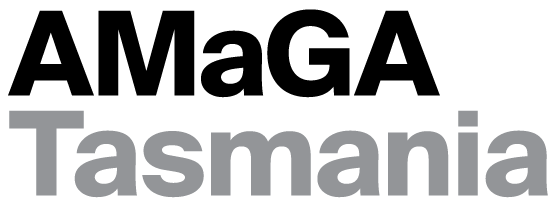In #4 of our series about the impact of COVID19 on Tasmanian museums David Maynard, QVMAG Senior Curator Natural Sciences, shared his experiences. David continues to reflect on the impact of this pandemic focussing on some positive outcomes. This becomes article #5.
The COVID19 restrictions have presented challenges and
opportunities for us all. To quote actor Clint Eastwood (as I am sure that we
all do in the face of adversity*) "Improvise, adapt and overcome!"
(Heartbreak Ridge, Malpaso Productions 1986). One of the benefits for the QVMAG Natural Sciences team has been the
opportunity to tackle work that would normally stay on the back burner. Here
are a few examples from QVMAG.
Museums Collections Officer (and employee for 42 years!) Judy Rainbird focused
on legacy tasks that have been hanging around for years, and in some cases
decades. One of the treasures that Judy found amongst her the sections files
was a newspaper article from 1947 that references the Museums important
colelction of megafaunal remains discovered in 1941. The article states
"What is probably a very important scientific discovery is still
mouldering in the vaults of the Launceston Museum awaiting an expert to examine
it". Well, moulder no longer megafauna! We can now say that, after waiting
73 years, an expert has been found and the "important scientific
discovery" will be discovered in the next few months.
For me, COVID19 has meant that I have been able to focus on writing a book
chapter about the thylacine and how QVMAG has portrayed it in our exhibition
Tasmanian Tiger: Precious Little Remains. This was a challenge for me as I am
normally focused on the scientific aspects of the species and its extinction
however, I was required to tease out the historical and cultural aspects of
thylacine 'rememberance.' Another writing challenge has been a manuscript about
the behavioural pattern of a little known Tasmanian endemic wasp. This was
based on a opportunistic discovery on my farm during the first week of the
COVID lockdown (insert inspiring Clint Eastwood quote here). The biggest
challenge for me was that I know very little about insect behaviour (I am a
fish person), but COVID has given me the time to research the topic and
wordsmith the manuscript to within an inch of its life!
 Lastly and most impressively, Museum Collections Officer (and insect pinning
machine) Simon Fearn has dedicated his COVID time to processing a donation of
historical 'papered' butterflies into pinned specimens. This donation was
tacked onto a larger donation that QVMAG, and was unlikely to recieve any
attention in the foreseeable future. Simon has carefully and delicately relaxed
the papered specimens and pinned them to the highest standard. This particular
donation was collected mostly in the early 1970s from Australiasia. They will
be registered into the QVMAG collection and their data uploaded to the Atlas of
Living Australia. Other than being aesthetically stunning, these specimens and
their data tell us where these species were present in the 1970s (are they still
there? is their habitat still there?).
Lastly and most impressively, Museum Collections Officer (and insect pinning
machine) Simon Fearn has dedicated his COVID time to processing a donation of
historical 'papered' butterflies into pinned specimens. This donation was
tacked onto a larger donation that QVMAG, and was unlikely to recieve any
attention in the foreseeable future. Simon has carefully and delicately relaxed
the papered specimens and pinned them to the highest standard. This particular
donation was collected mostly in the early 1970s from Australiasia. They will
be registered into the QVMAG collection and their data uploaded to the Atlas of
Living Australia. Other than being aesthetically stunning, these specimens and
their data tell us where these species were present in the 1970s (are they still
there? is their habitat still there?).
We are all looking forward to getting back into the Museum and the collections
but I think that we will reflect on the COVID19 restrictions as an opportunity
arising from adversity.
Good one David. Always heartened to hit an optimistic note.





No comments:
Post a Comment